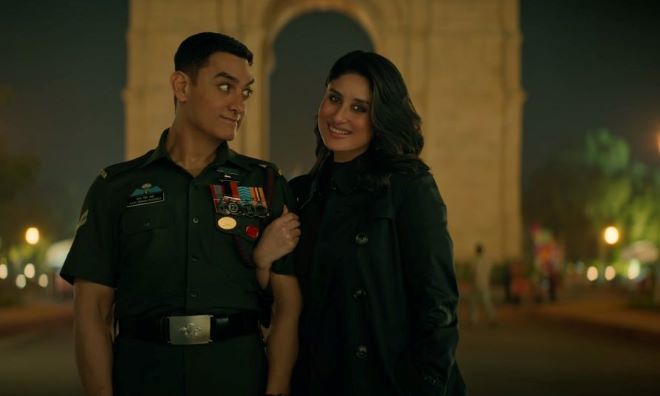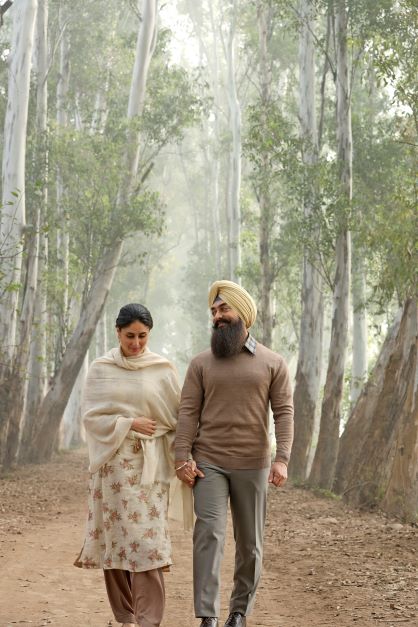2708 people reached on FB Lassi with Lavina Page – 109 engagements
305 people reached on Instagram – 16 Likes
1550 people reached on LinkedIn – 17 Likes

Laal Singh Chaddha – An Indian Home-grown Tale
[dropcap]A[/dropcap]long with the swaying fields of golden mustard and a folksy gulguppa philosophy ‘Laal Singh Chaddha’, an official Indian adaptation of the iconic Hollywood film ‘Forrest Gump’, has its own colorful personality. For a whole new generation of film-goers who might not have seen the Hollywood movie at all, ‘Laal Singh Chaddha’ works as a stand-alone original, a tale with a beating pan-Indian heart.
Chaddha, like the original Gump, wanders the country and is part of historic milestone events. His great-grandfather, grandfather, and father fought and died in wars; he’s a child at the time of Operation Bluestar, is in the mayhem of the assassination of an Indian prime minister and the tragedies which follow. He himself fought in the Kargil War and yes, gets the Param Vir Chakra; the rise of BJP, the bombing of Mumbai by terrorists – our intrepid wanderer passes through the landmines of modern India. A quick snapshot of Indian history but it may be puzzling to the ones who don’t really know contemporary events in the sub-continent.
[dropcap]P[/dropcap]articularly engaging are the childhood years – and both the young actors are touching and likeable, getting us invested in their story. The same can’t always be said for the grown Laal Singh Chaddha – there’s a sameness to his depiction of his character and some spark is missing. I think I would have liked to see a bit more complexity in Aamir’s interpretation of his role – some intensity, some quirks, some anger, some joy.- some warmth in the romance. We need to see his beating heart – he has achieved that in every one of his films – whether he played hero or anti-hero, and somehow that is not fully seen. The scenes where he just runs and runs like a mad man in search of he knows not what, are quite powerful and the song, “Tur Kalleyan”, picturized on him is simply beautiful with lyrics which have meaning and depth.

[dropcap]K[/dropcap]areena Kapoor Khan is cast well – I couldn’t think of any other known actress who would have fit in as well – she has a sweetness which is reminiscent of Laal’s childhood sweetheart and sexiness and a vulnerability which makes you understand her dilemmas. Mona Singh as the mother is inspired casting – she is the rock of Laal’s world – and I wonder why we don’t see more of this actor in other films. She comes across as a strong woman and seeing her driving a tractor and just running the farm single-handedly conveyed her handling of all that life threw at her.
There are also some surprise delights such as Shah Rukh Khan’s cameo and a feisty joyful appearance by the 50’s actress Kamini Kaushal.
[dropcap]A[/dropcap]mir is of course known as Mr. Perfection and with good reason – he is among India’s best. You can see the thought that has gone into every aspect of the film – and he is probably the one filmmaker who could make this film with such sincerity and deep understanding. I loved the fact that the bench in the original ‘Forrest Gump’ movie is replaced by a seat in a packed train compartment. India is all about crowds and community and it’s so natural to see inquisitive passengers congregating to hear a stranger’s tales.
[dropcap]T[/dropcap]he diverse locations chosen for this film – especially as he runs across the country – are breathtaking and show you the uniqueness and beauty of India. The romantic scenes in India Gate were creative thinking at its best – usually this location comes through as prosaic and boring – here with the right lighting and camera work it looks simply sumptuous. The simple farmhouse too – caught in the aura of different natural lights – has a beautiful, stark quality to it which makes the modest space look rich and welcoming.
It’s a welcome addition to our cinematic resources, and as only Aamir Khan could do it. Both ‘Forrest Gump’ and its Indian adaptation ‘Laal Singh Chaddha’ move us because they prove that goodness is universal and a tale of an ordinary man doing extraordinary things cuts across the barriers of language and culture.

